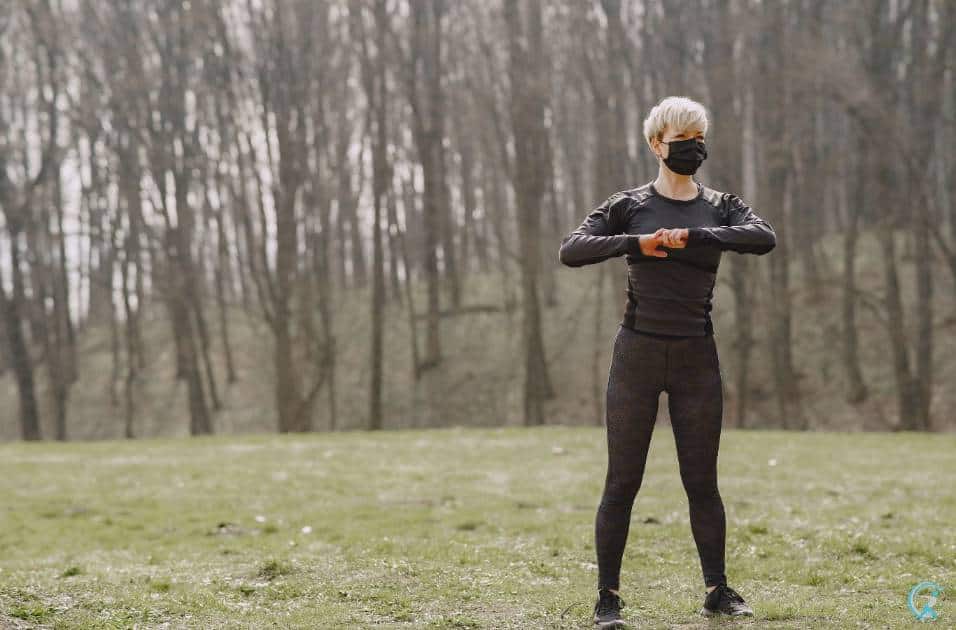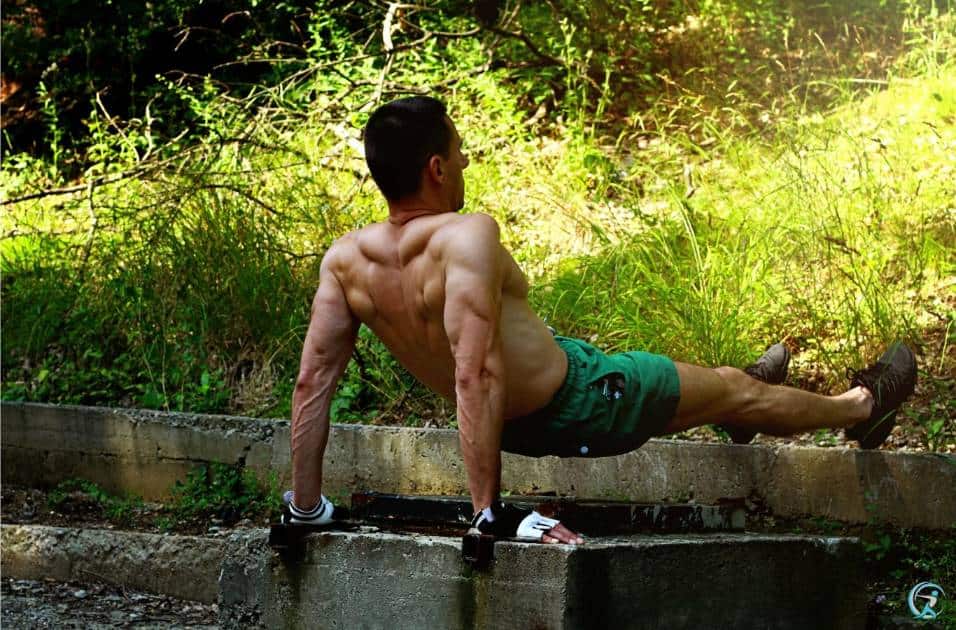Paleotraining is an alternative to traditional training created by a sports scientist. It is based on the theory that the body needs rest before adapting to new stimuli. This training method works with low impact and uses exercises that use little energy, which makes it ideal for people who want to maintain their fitness level at work or after work but don’t have time for long workouts.
Key Takeaways
- Paleo training is an effective method for fitness goals.
- Primal movements and functional exercises enhance strength and mobility.
- Paleo-inspired diet optimizes training results.
- Natural movement patterns and nutrient-dense foods promote a healthy lifestyle.
- Full-body workouts and varied exercise routines are emphasized.
- Consistency and commitment are crucial for success.
- Rest and recovery prevent injuries and promote muscle growth.
- Personalize paleo training to suit individual needs and fitness levels.
- Seek guidance from a fitness professional for support.
- Transform your fitness routine with paleo training.

What is Paleotraining
Paleotraining isn’t just a workout, it’s a time warp. Forget the gym’s sterile machines and embrace the primal movements that forged our ancestors into agile hunters and gatherers. Think sprinting, climbing, jumping, carrying – all the dynamic motions that fueled survival in the Paleolithic era.
There have been many buzzes lately about the Paleo Diet and how it might be the answer to weight loss and the solution to many other health problems. But is it all that it’s cracked up to be? The Paleo Diet is based on the premise that we should all try to eat as our hunter-gatherer ancestors did during the Paleolithic era. But just as our bodies and minds have changed dramatically since the Stone Age, so have the foods we eat.
Paleotraining is exercising in a way that mimics the demands of an ancient lifestyle. In a paleo lifestyle, you’re expected to hunt your food and often move around to find it. This would have been very physically demanding. Thus, paleo fitness is the practice of getting in the best shape possible, using moves and equipment that would have been available in our ancient ancestors’ time. A paleo workout will burn fat, build muscle, and reduce disease risk. It can even improve the performance of athletes who play contact sports due to improved core strength. Paleo fitness comes in two primary varieties. The first is gym paleo, which is just like
Paleotraining is a training method that everyone can use
Paleotraining is a method of training that can be applied to anyone, no matter their current fitness levels. It’s not about doing certain exercises or following a specific workout plan; it’s about training in a way that causes your body to function as it did millions of years ago.
Paleo training is not a new trend—it’s an old one! Our bodies weren’t designed for running on treadmills and lifting barbells; they were designed for hunting wild animals and chasing down prey on foot. This means that we need to train our bodies the way they evolved: by doing activities such as sprinting through fields, climbing trees, lifting heavy rocks with our bare hands, and carrying heavy logs while running up hills.
Paleo training aims to make the most of your body’s natural movements.
Paleotraining is based on the idea that your body is designed for movement. The premise of paleotraining is to make the most of your body’s natural movements, which include walking, climbing, crawling, and pulling yourself up. Using these basic human movements as a starting point will help you better understand how your body functions during movement and what muscles are used.
Learning how your body moves naturally is essential for optimizing performance in any sport or activity. This way, you can strengthen all the necessary muscle groups without wasting energy trying to build muscles that aren’t necessary for an activity or sport.

How does Paleotraining work
Paleotraining (paleo fitness) is an approach to exercise that draws from early humans’ practice and our paleolithic ancestors. Instead of working out at high intensity for short bursts, Paleo fitness advocates that we should work out at lower intensity for more extended periods. This exercise style is referred to as ” interval training” since you are alternating between periods of intense and less intense effort. The theory is that humans weren’t built to run at high intensity for extended periods and that our bodies adapt to switching back and forth between hard work and rest. Anticipated Questions: How do I know if I am doing paleo fitness right?
Paleotraining derives from the principle that the body needs to approach training as it did in the past when humans were hunter-gatherers and sporadic physical activity was the norm. Hunter-gatherers were nomadic and moved regularly, but they would often stop and hunt or gather for prolonged periods. This contrasts with the typical sedentary lifestyle that many of us lead today. This Paleotraining concept goes against conventional training methods, focusing on high-intensity workouts and eliminating rest days. Paleotraining derives from the principle that the body needs to approach training as it did when humans were hunter-gatherers and sporadic physical activity.
How to Start with Paleotraining?
Despite its relatively new concept, Paleo training has already become quite popular among the health and fitness crowd. So, what is paleo training? It is a fitness regimen based on the Paleolithic Era’s exercise, diet, and lifestyle choices, which ended more than 10,000 years ago. The Paleolithic Era is also known as the Stone Age, when humans were as uncivilized as people. So, what makes it a significant era to base a training program on? It is well-documented that, during this era, humans lived longer and healthier lives than today. This era was also when humans were primarily free of health problems.
Paleotraining is a type of training that is based on the movements of ancient humans. It is often used as a foundation for other training types.

How can you benefit from paleotraining?
In addition, paleotraining can be used as a form of physical therapy. The exercises in this method are gentle and non-invasive, meaning they’re safe for people with injuries or chronic pain conditions. It can also help you recover from injuries more quickly and strengthen weak areas of your body that are causing pain.
Paleo training will help you improve your posture and balance, increase muscle tone and flexibility, reduce fatigue, boost energy, and increase mental focus — all things that many struggle with as they age!
Paleotraining targets the entire body:
- Paleotraining trains the whole body, not just a specific sport.
- The Paleolithic lifestyle requires that you be able to move your body to get food and shelter. Paleotraining helps you improve this movement so that it makes sense for modern life.
- It’s good for your health and fitness because it helps prevent injury and keeps you strong enough to be active throughout life—which means fewer bathroom breaks!
Paleotraining looks at the whole person
It is not just about exercise. It’s about looking at the whole person and their functioning as a system. A good paleo trainer considers how your diet affects you, how your sleep quality impacts your ability to train, or whether stress levels may affect your performance.
In other words, an effective paleo trainer looks at all aspects of human health—not just exercise! In addition to being a great strength and conditioning coach for athletes, those who practice paleo training also learn valuable lessons on how to live well in a world that often makes us feel like we are living unhealthy lives because we want nothing more than a glass of wine after work (or twelve), some warm chocolate chip cookies while watching Netflix after dinner (or fourteen), and maybe even some ice cream if we’re feeling frisky.

Paleotraining includes several training formats
When you think of exercise, you may think of a gym or maybe a group class in a studio. But paleo training can be done in various ways, alone and outdoors. And it’s effective at all times of day—even when it’s dark out!
Paleotraining is an innovative fitness approach incorporating old ideas with new technology and research. It focuses on full-body movements using natural materials found around us like sandbags, rocks, and tree trunks. The idea is to use these materials instead of modern equipment such as barbells or weight plates. We’ll get stronger faster without sacrificing flexibility or stability in our joints; this makes us stronger and healthier overall because we’re working with our bodies instead of against them!
Paleotraining is doing more than exercise
Although paleo training is effective for achieving your health and fitness goals, it’s not just about exercise. The “paleo” in paleo training refers to the Paleolithic era, which lasted from around 2.6 million years to about 10,000 years ago. During this time, humans were hunter-gatherers who lived nomadic lifestyles without access to modern conveniences like electricity or cars. Their diet consisted of wild plants and animals killed by hunting or found in nature; they did not eat processed foods or refined sugars.
You may be wondering how this has anything to do with modern living! But the thing is: our bodies are still wired for life during this period—meaning that we’re genetically programmed to thrive on a diet mainly consisting of fruits and vegetables (like greens), nuts/seeds/legumes (like almonds), meats (like salmon), eggs (like those from pastured chickens), healthy fats (like coconut oil)…and yes—some starchy carbohydrates such as sweet potatoes!

With paleotraining, you train your body as it was meant to be trained.
The idea behind paleotraining is simple: with this method, you train your body as it was meant to be trained. Rather than seeking out ways to increase your strength speed, or endurance, you focus on how those things were optimized by our ancestors and then integrate that into a functional fitness program.
There are different schools of thought among paleotraining experts about the best way to go about the training process — some believe in a “natural” method that takes inspiration from what our ancestors did; others advocate for more strict adherence to ancient methods. But all agree on one thing: if there’s one thing we can learn from our past, we’re much better off doing things naturally than forcing ourselves into modern situations where they don’t belong.
Brief History of Paleotraining
Our Paleolithic ancestors developed the apelike body form we’re all familiar with – long arms, short legs, and a broad torso – through a unique set of physical adaptations designed to let them chase down prey while expending the least amount of energy possible. This locomotion style became so ingrained in our DNA that it still influences how we move today. Would today’s humans be able to catch up with prey if we had to chase it down in the same style as Paleolithic humans?
Paleotraining is a style of training that is designed to simulate the way people lived in ancient times. It usually consists of bodyweight exercises and cardiovascular activities that are similar to what our hunter-gatherer ancestors would have done to stay fit. It also includes eating Paleo foods, which are foods that our ancestors would have eaten. The goal is to improve health and fitness and provide a workout close to our ancestors. Although this training style has been getting much attention recently, it isn’t a new concept. The idea of exercising as our hunter-gatherer ancestors did is by no means modern; it’s been around for decades. Vision, Mission,

What are the Benefits of Paleotraining?
Paleotraining is the practice of strenuous resistance training with limited use of the most common equipment and an almost exclusive focus on the body’s natural movements. It has been proven to strengthen the body’s musculoskeletal system and is one of the most effective and safe exercises for developing strength and endurance. Just as in other forms of training, the muscles adapt to the stress put on them. Muscles in a state of equilibrium are not well-suited to strenuous activity. To develop, they must be forced to do more work than they would in a normal state.
Paleotraining is a catch-all term for workouts that copy the way our hunter-gatherer ancestors moved. It is based on the idea that we are not physically adapted to the current sedentary lifestyle and that the human body is better built to run long distances and climb trees than sit in a chair all day. Therefore, exercise routines considered to be paleo training focus on movements like walking/running, climbing, crawling, carrying, throwing, and swimming. These exercises are done as close to a natural setting without specialized equipment.
What are the Paleotraining Exercises?
It’s not a diet. It’s not a quick fix. Paleotraining is a lifestyle. It’s a way of living and eating practiced by our ancestors. Paleotraining exercises are the physical activities that are part of the Paleotraining lifestyle. Our ancestors had to perform these physical activities to help them survive in the wild. They used their bodies for hunting, gathering, and everyday life. These physical activities are essential for our health. They are the basis of Paleotraining exercises. Paleotraining exercises help you burn fat and calories, build muscle, and stay healthy.
Paleotraining combines strength training and aerobic exercise, utilizing a variable load for each exercise. The variables are load, repetitions, and rest. The load can be based on load, time under tension, velocity, or metabolic demand. You can find the replays on load, time under pressure, or metabolic demand. And the rest can be based on load, time under tension, or metabolic need. The goal of paleo training is to achieve a metabolic response with a periodization of training based on the great Russian scientist Yuri Verkhoshansky. Paleotraining combines strength training and aerobic exercise, utilizing a variable load for each exercise.

How to do the Paleotraining Exercises?
Paleotraining is an exercise method that resembles the training methods of our ancestors. It’sIt’s a form of high-intensity interval training that works with your body rather than against it. When you work out with Paleotraining, your workouts are short and sweet so that you can squeeze them into even the busiest schedule. While the exercises can be intense, they don’t require any extra equipment. And since workouts are so quick, you’ll never have an excuse for not getting your sweat on after work.
Paleo training is a form of resistance training based on lifting heavy weights. It is an exercise methodology designed to replicate the movements of ancient humans. The name “paleo” refers to the Paleolithic, the stone age. Humans had to hunt, fish, and gather to survive during this period. They were forced to be in a constant state of motion and strength. They used all types of natural resistance: rocks, trees, water, mud, and sand. The exercises used then are the same ones used today in the Paleo training approach.
Ready to ditch the ordinary and unleash your inner caveman?
Here’s a taste of what awaits:
- Sprint like a cheetah chasing its dinner. No treadmill required, just find an open space and let your instincts take over.
- Climb like an ape scaling the jungle canopy. Trees, walls, jungle gyms – the world is your playground.
- Carry like a hunter bringing home the spoils. Grab some logs, sandbags, or even groceries and feel the primal power surge.
- Jump like a frog escaping a predator. Unleash your inner leapfrog champion and defy gravity with explosive bursts.
Paleotraining isn’t a fad, it’s a return to roots. It’s about reconnecting with your body’s natural potential and rediscovering the thrill of primal movement. So, ditch the dumbbells, step outside, and let the wild guide you.
FAQs about Paleotraining: an effective training method
What is Paleo Training? Paleo Training is a fitness approach that focuses on mimicking the movements of our ancestors to improve strength and overall fitness.
How does Paleo Training differ from traditional workouts? Paleo Training emphasizes natural movements and functional exercises, rather than using machines or following structured routines.
What are the benefits of Paleo Training? Paleo Training can improve strength, agility, flexibility, and overall fitness. It can also enhance body awareness and promote a more natural range of motion.
Is Paleo Training suitable for everyone? Paleo Training can be adapted to different fitness levels and abilities. However, it’s always recommended to consult with a fitness professional before starting any new training program.
Are there any specific equipment requirements for Paleo Training? Paleo Training mainly relies on bodyweight exercises and natural movements, so minimal equipment is needed. However, certain tools like kettlebells or resistance bands can be incorporated for added variety and challenge.
Conclusion
While paleotraining can provide benefits for some individuals, it’s important to be aware of the potential risks. Not everyone may be suitable for this exercise program, and there is a risk of injury if not performed properly. By consulting with a healthcare professional and taking necessary precautions, you can minimize the risks and enjoy the benefits of Paleotraining.
Paleotraining: Where fitness meets freedom. Are you ready to answer the call?
Remember, Paleotraining is for everyone, regardless of fitness level. Start slow, listen to your body, and gradually increase intensity as you get stronger. And most importantly, have fun!
References
| Scientific Study | URL |
| Can a Paleolithic Diet Improve Insulin Sensitivity and Insulin Secretion? | https://www.ncbi.nlm.nih.gov/pmc/articles/PMC6453892/ |
| The effects of the paleolithic diet compared to a diabetes diet in patients with type 2 diabetes | https://www.ncbi.nlm.nih.gov/pmc/articles/PMC6521179/ |
| The effectiveness of a short-term paleolithic diet on reducing symptoms of osteoarthritis: a pilot study | https://www.ncbi.nlm.nih.gov/pmc/articles/PMC5357530/ |
| Paleolithic nutrition improves plasma lipid concentrations of hypercholesterolemic adults to a greater extent than traditional heart-healthy dietary recommendations | https://www.ncbi.nlm.nih.gov/pmc/articles/PMC3593532/ |
| Paleolithic and Mediterranean Diet Pattern Scores Are Inversely Associated with Biomarkers of Inflammation and Oxidative Balance in Adults | https://www.ncbi.nlm.nih.gov/pmc/articles/PMC5793268/ |
As a veteran fitness technology innovator and the founder of GearUpToFit.com, Alex Papaioannou stands at the intersection of health science and artificial intelligence. With over a decade of specialized experience in digital wellness solutions, he’s transforming how people approach their fitness journey through data-driven methodologies.
